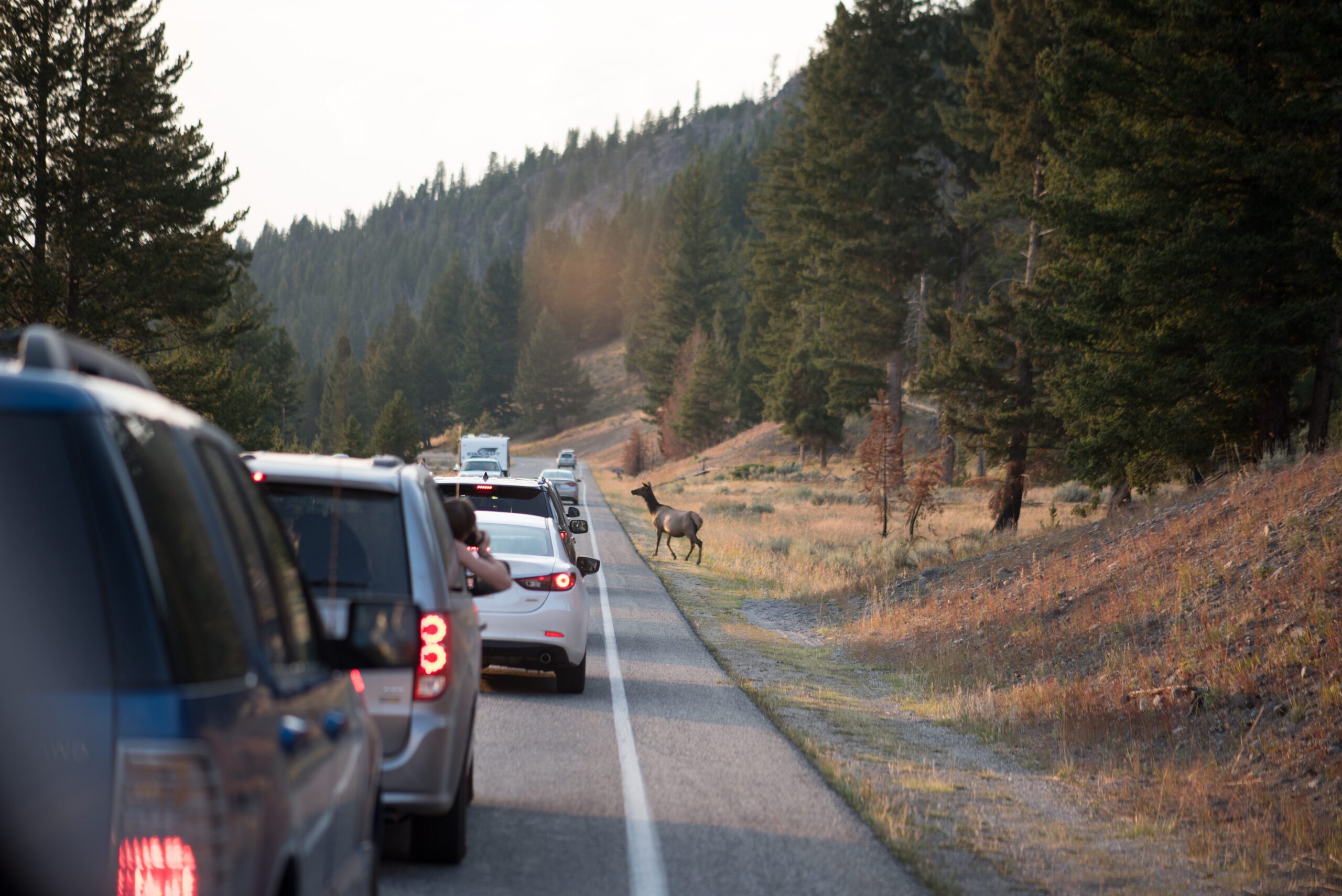By Ryan Strother EBS CONTRIBUTOR
When asked if Gallatin County is aware of the problem of wildlife collisions on U.S. Highway 191, County Commissioner Jennifer Boyer is emphatic: “Yes, definitely. For sure. That’s an easy yes.”
The stretch of highway that connects Big Sky with Bozeman saw a spike in elk-vehicle collisions last fall, and collisions in the corridor remain a hot issue for several local, state and federal agencies. Wildlife-vehicle collisions and ecological fragmentation is a major problem in Montana and around the country, and two new sources of funding designated to address those problems could make wildlife crossing structures in the Gallatin Canyon a step closer to reality.
On April 3 of this year, the U.S. Department of Transportation announced a pilot program intended to improve habitat connectivity and reduce vehicle-wildlife collisions. The Wildlife Crossings Program designates a total of $350 million over five years to projects that increase the safety of roads and improve ecosystem connectivity.
Funding is also available through the Montana Wildlife & Transportation Partnership. The MWTP is accepting proposals for stand-alone projects that reduce wildlife-vehicle conflicts and increase opportunities for wildlife to cross Montana’s roads safely.
A study of 191 nearly complete
A major next step for solving the crossing problem in Gallatin Canyon is The Center for Large Landscapes (CLLC) and the Western Transportation Institute’s assessment of the stretch of 191 between West Yellowstone and Four Corners. The study was initially estimated to be completed in early 2023, but remains in the review process with partners, who are providing input and data—all of which will be useful for potential funding applications.
There’s no shortage of organizations providing input: The Montana Department of Transportation, Montana Fish, Wildlife and Parks, U.S. Fish and Wildlife Service, The Interagency Grizzly Bear Committee, Yellowstone National Park, Gallatin County, and the Federal Highway Administration are all pitching in to detail the extent of risks to drivers and ecosystem fragmentation imposed by the highway.
Liz Fairbank is a road ecologist with the CLLC and is working on the study. She frames landscape connectivity as “the safety net of nature.”
“Animals need to be able to move to meet daily, seasonal lifetime needs, and also to respond to all kinds of changing environmental conditions, whether that’s climate change, fire, drought or disease,” Fairbank said.
The benefits of restoring ecological connectivity on highways with crossing structures go far beyond just reducing wildlife collisions. While collisions pose serious risk to drivers and reduce wildlife numbers, populations that are prevented from attempting to cross roads at all might forever stay on one side of a highway, reducing genetic diversity and creating islands of non-interbreeding populations of the same species.
“If they’re confined to these kind little islands of areas, whether that’s protected areas or otherwise, then they’re less able to respond to those pressures and they’re less likely to be healthy and stable in the long term,” Fairbank said.
The report is unlikely to be ready with enough time for an application to the first round of funding in the Wildlife Crossings Program, which closes Aug. 1, 2023, or the current application cycle for the Montana Wildlife & Transportation Partnership–but funding opportunities remain in subsequent rounds of both programs and the report will certainly be useful to any entity applying for state or federal funding.
With lots up in the air, one reliable certainty to solving this issue, Fairbank says, is time.
“Anything that happens on 191 is going to be a multi-year project. [A wildlife crossing project] needs a lot of different agencies, different people to come together to coalesce around a specific site and a specific project. And that’s going to take time,” Fairbank said.
No clear champion for a crossing… yet
The list of potential project leaders and applicants for funding is a long alphabet-soup of stakeholder organizations, but currently no group has taken the helm as leader of the charge.
Commissioner Boyer said Gallatin County is eager to help efforts to build a structure, through grant writing support or providing matching funds from a payment-in-lieu-of-taxes credit the county receives from the federal government for its stewardship of public lands—a useful measure in the case of federal funding, which requires at least 20% in matching funds. But Boyer says the county is unlikely to head up the project.
“I think it’s going to take all of us pulling in the same direction, and I don’t know if the county will end up being the leader. My gut says probably not just because of the road jurisdiction,” Boyer said.
A common sentiment among all organizations involved in improving landscape connectivity in southwest Montana is the strong need for support from the Montana Department of Transportation. No matter who takes up the project, no funding application will be successful without strong backing from MDOT.
Another challenge waiting for any organization who might submit a proposal remains the potential for future development on private land. According to experts at the CLLC, there’s no way to build an effective crossing structure near the mouth of the Gallatin Canyon that will actually be used by wildlife without connecting parcels of private land. For an application to be successful, they say, cooperation with private landowners is key.
The CLLC created a guide for land trusts and private landowners to evaluate options for protecting migratory paths of wildlife. Protection of private lands, most successfully done through the creation of conservation easements, will be a key component of any successful funding application.
Beyond Gallatin Canyon
Reducing collisions with elk and white-tail deer on 191 is a major priority for Gallatin County, but the problem of collisions and connectivity extends far beyond the canyon. The Yellowstone to Yukon (Y2Y) Conservation Initiative seeks to connect and protect the 2,200-mile stretch of habitat from Wyoming to the northern Yukon Territory. Habitat fragmented by roads like Highway 191 are a serious barrier to connectivity, but larger state highways and interstates like I-90 can pose an even greater ecological cutoff, shutting down animal movement between major regions.
Grizzly bears, for example, are known to cross smaller state and federal highways, but rarely venture across larger roadways like I-90, which serves as the de-facto northern range limit for the Yellowstone grizzly population. Jessie Grossman is a landscape connectivity manager for the Yellowstone to Yukon (Y2Y), who focuses on the ecological impacts of roadways.
“I’ve been working on this issue for 10 years, and off the top of my head I can think of two examples of grizzly bears in Montana that have successfully made it across I-90 that we know of,” she said.
Though the documented crossings are near zero, Grossman says the fact that it’s not zero is a hopeful sign.
“On one hand that’s really good news because it means that I-90 isn’t a complete barrier. It’s not hopeless,” Grossman said. “It shows us that connectivity is possible and wildlife are finding a way, and I think it’s our responsibility to make it easier for them.”
For wildlife crossings to have maximum effectiveness, Grossman said, connecting multiple connectivity projects across multiple highways will work best to connect large landscapes together and protect the health of wildlife populations.
Commissioner Boyer agrees: “Highway 191 is super important, but that is not the only place in our county and in our region that is a critical corridor. [Roads like I-90] are also having impacts both ecologically and with safety, with transportation and people.”














